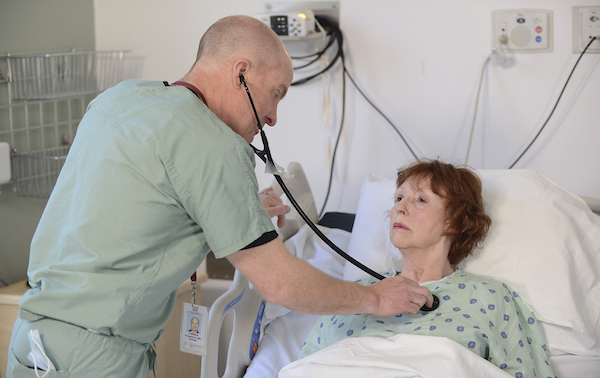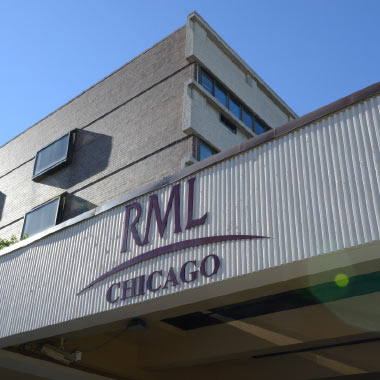Quality & Safety Data
Committed to the highest quality and safest care for patients, RML has been consistently recognized for its efforts achieving The Gold Seal of Approval and accreditation for both hospital and laboratory services from The Joint Commission.
When Quality of Care and Outcomes Matter
The chart below is updated as often as the data is publicly available for download CMS Data April 2024.
For the most current Medicare date go to the LTCH Compare website.
At RML, having a culture based in continuous improvement is the hallmark of our success and ability to meet and/or exceed national benchmarks in key quality metrics. We evaluate our effectiveness by measuring clinical outcomes and are proud to report our outcomes in key areas that we believe depict are associated with excellence in healthcare. They include:
New or Worsened Pressure Ulcers
Pressure ulcers can be painful and cause other complications, like a reduction in mobility and infections. LTCHs can help to prevent and treat pressure ulcers by understanding which patients are at higher risk, ensuring frequent changes in the patient's position, providing proper nutrition, and using specialized beds to reduce pressure on the skin. Some patients may get pressure ulcers even when the LTCH provides good preventive care.
Catheter Associated Urinary Tract Infections (CAUTI)
A catheter is a drainage tube that is inserted into a patient's bladder through the urethra and is left in place to collect urine. When not put in correctly, or kept clean, or when left in place for long periods of time, catheters can become an easy way for germs to enter the body and cause serious infections in the urinary tract. These infections are called catheter-associated urinary tract infections (CAUTIs). CAUTIs may be prevented when long-term care hospitals use infection control steps recommended by CDC.
Central Line Associated Bloodstream Infection (CLABSI)
A central line is a narrow tube inserted into a large blood vessel to give important medical treatment. When not put in correctly or not kept clean, central lines can become an easy way for germs to enter the body and cause serious infections in the blood. These infections are called central line-associated bloodstream infections (CLABSIs). CLABSIs may be preventable when long-term care hospitals use infection control steps recommended by CDC.
Clostridium difficile infection (CDI)
Clostridium difficile (C. diff.) is a type of bacteria that causes inflammation of the colon. C. diff. infection can cause severe diarrhea, fever, appetite loss, nausea, and abdominal pain. Most cases of C. diff. infection occur in patients taking antibiotics. C. diff. infections may be prevented or stopped from spreading to other patients when long-term care hospitals use infection control steps recommended by CDC.
Flu Vaccine Amongst Healthcare Workers
Influenza or the "flu", is a respiratory illness that's caused by flu viruses and easily spreads from person to person. The flu can cause serious complications, including death. To reduce the spread of the flu within a long-term care hospital, it's recommended that all healthcare workers get the flu vaccine ("flu shot") each year.
30-Day Post Discharge Readmission
This measure shows the percentage of patients discharged from a LTCH stay who were readmitted to a hospital within 30 days for a medical condition that might have been prevented. A LTCH can reduce the number of potentially preventable hospital readmissions by doing its best to prevent complications, providing clear discharge instructions to patients and families, and making sure patients have a safe transition to their home or another setting. Some LTCH patients need to be admitted to the hospital for problems that were not potentially preventable. These admissions are not included as readmissions for this measure.
Patient Falls with Major Injury
Fall-related injuries are a leading cause of morbidity and mortality among LTCH patients, and an important health outcome for LTCHs to monitor. Falls with major injury can cause new physical limitations, disability, and depression. LTCHs can prevent or reduce falls by providing appropriate patient care and sufficient support.
Percentage of patients whose activities of daily living and thinking skills were assessed and related goals were included in their treatment plan.
Improving or maintaining activities of daily living, thinking skills, and the ability to communicate with others are important goals for LTCH patients. The admission assessment helps the LTCH clinical team develop a treatment plan with the patient and the discharge assessment helps clinicians plan appropriate follow-up care after discharge. This measure reports the percentage of patients whose activities of daily living, thinking skills, and communication skills were assessed and goals for improving or maintaining these abilities were included in their treatment plan.
Percentage of patients whose functional abilities were assessed, and functional goals were included in their treatment plan.
Improving or maintaining functional abilities is an important goal for LTCH patients. The admission functional assessment helps the LTCH clinical team develop a treatment plan with the patient and the discharge functional assessment helps clinicians plan appropriate follow-up care after discharge. This measure reports the percentage of LTCH patients whose ability to perform daily activities like bathing and walking were assessed and goals for improving or maintaining these functional goals were included in their treatment plan.
Change in ability to move around for patients admitted on a ventilator.
Increasing a LTCH patient's ability to move, like standing up, getting to and from a chair, and walking short distances – even while on a ventilator – can help reduce the risk of lung infections and pressure ulcers, and improve quality of life. This measurement reports the average change in mobility score for LTCH stays where patients were admitted on a ventilator between admission and discharge after adjusting for key patient characteristics.
Percentage of patients whose medications were reviewed and who received follow-up care when medication issues were identified.
Medication errors can lead to emergency department visits and repeat hospitalizations, as well as significantly affect a patient's health, safety and quality of life. LTCHs can decrease the likelihood of these errors by looking for and addressing potential or actual medication issues. This measure reports the percentage of LTCH patient stays where medication reviews were conducted during the stay, and patients received follow-up when issues were identified.
Rate of successful return to home & community from an LTCH
Returning to home or community is an important goal for most LTCH patients and their families. LTCHs can improve their successful discharge to community rate by providing rehabilitation strategies to improve functional ability, discharge planning and care coordination, patient and family education, and solutions to barriers a patient may face in the community. Discharge to community may not be appropriate for some patients even when the LTCH provides good care.
Medicare Spending Per Beneficiary (MSPB) for patients in LTCH
This measure shows whether Medicare spends more, less, or about the same on an episode of care for a Medicare patient treated in a specific LTCH compared to how much Medicare spends on an episode of care across all LTCHs nationally. This measure includes all Medicare Part A and Part B payments made for services provided to a patient with Original Medicare during an episode of care, which begins on the day of LTCH admission and ends 30 days after discharge from the LTCH.






